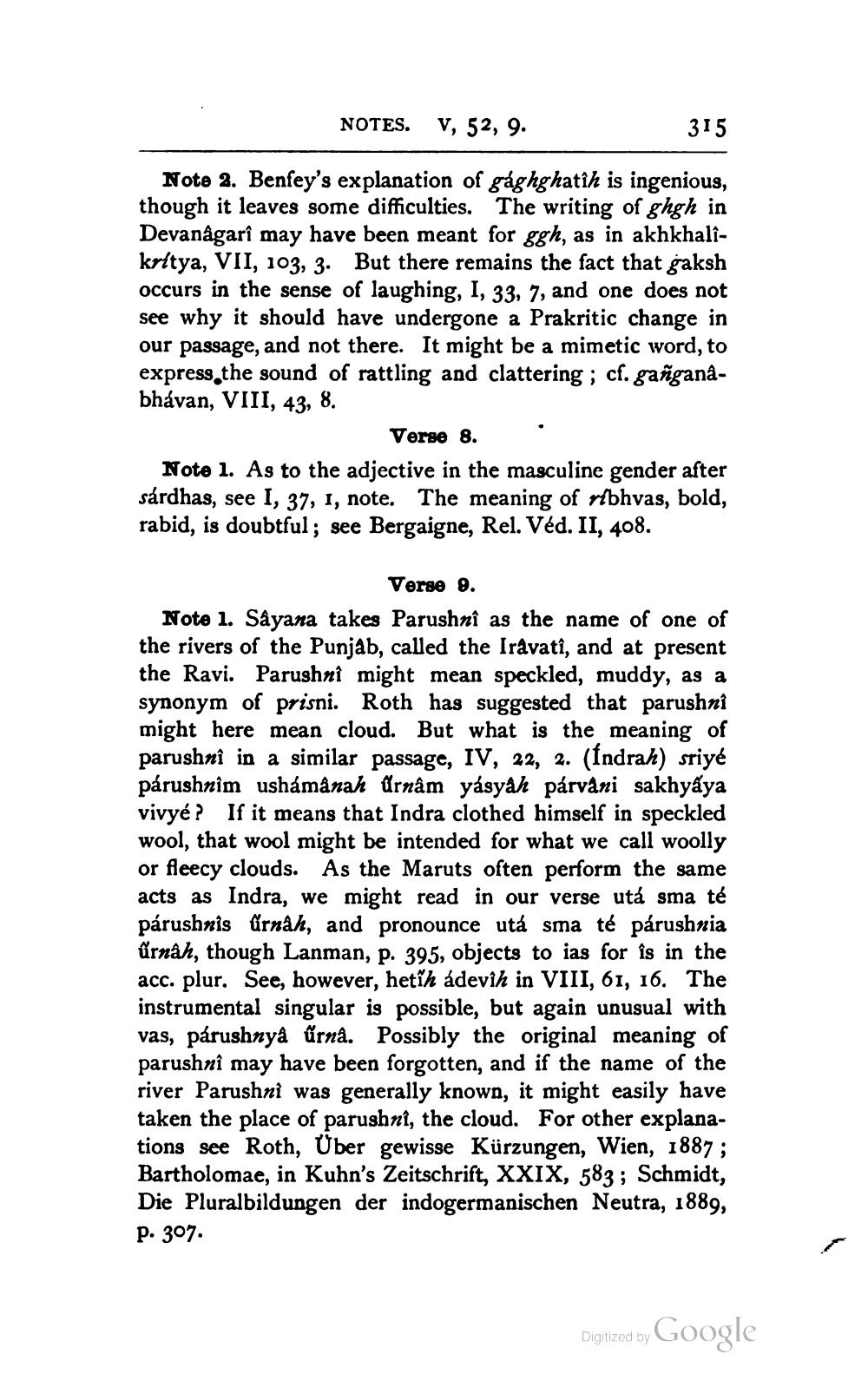________________
NOTES.
V, 52, 9.
315
Note 2. Benfey's explanation of gághghatih is ingenious, though it leaves some difficulties. The writing of ghgh in Devanagarî may have been meant for ggh, as in akhkhalikrltya, VII, 103, 3. But there remains the fact that gaksh occurs in the sense of laughing, I, 33, 7, and one does not see why it should have undergone a Prakritic change in our passage, and not there. It might be a mimetic word, to express the sound of rattling and clattering ; cf. gañganabhavan, VIII, 43, 8.
Verse 8. Note 1. As to the adjective in the masculine gender after sárdhas, see I, 37, 1, note. The meaning of rbhvas, bold, rabid, is doubtful; see Bergaigne, Rel. Véd. II, 408.
Verse 9. Note 1. Sâyana takes Parushnî as the name of one of the rivers of the Punjab, called the Iravatî, and at present the Ravi. Parushni might mean speckled, muddy, as a synonym of prisni. Roth has suggested that parushni might here mean cloud. But what is the meaning of parushni in a similar passage, IV, 22, 2. (Indrah) sriyé párushnim ushamanah Urnâm yásyåh párvani sakhyaya vivyé ? If it means that Indra clothed himself in speckled wool, that wool might be intended for what we call woolly or fleecy clouds. As the Maruts often perform the same acts as Indra, we might read in our verse utá sma té párushnis Arnah, and pronounce utá sma té párushnia űrnah, though Lanman, p. 395, objects to ias for is in the acc. plur. See, however, hetih ádevih in VIII, 61, 16. The instrumental singular is possible, but again unusual with vas, párushnyà úrna. Possibly the original meaning of parushnî may have been forgotten, and if the name of the river Parushni was generally known, it might easily have taken the place of parushni, the cloud. For other explanations see Roth, Über gewisse Kürzungen, Wien, 1887; Bartholomae, in Kuhn's Zeitschrift, XXIX, 583 ; Schmidt, Die Pluralbildungen der indogermanischen Neutra, 1889, P. 307.
Digitized by
Digilzed by Google




